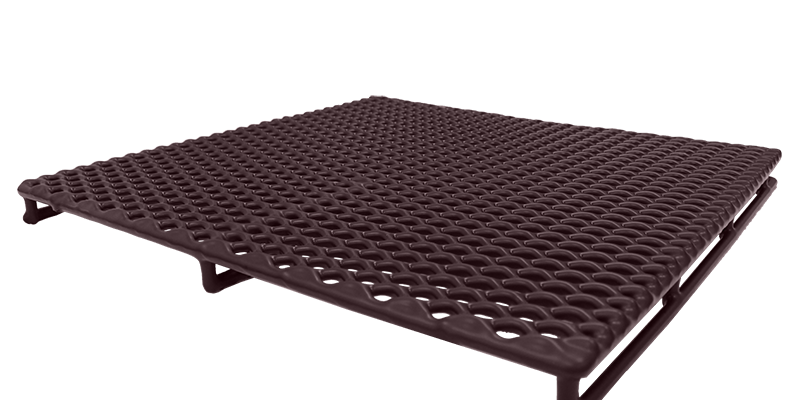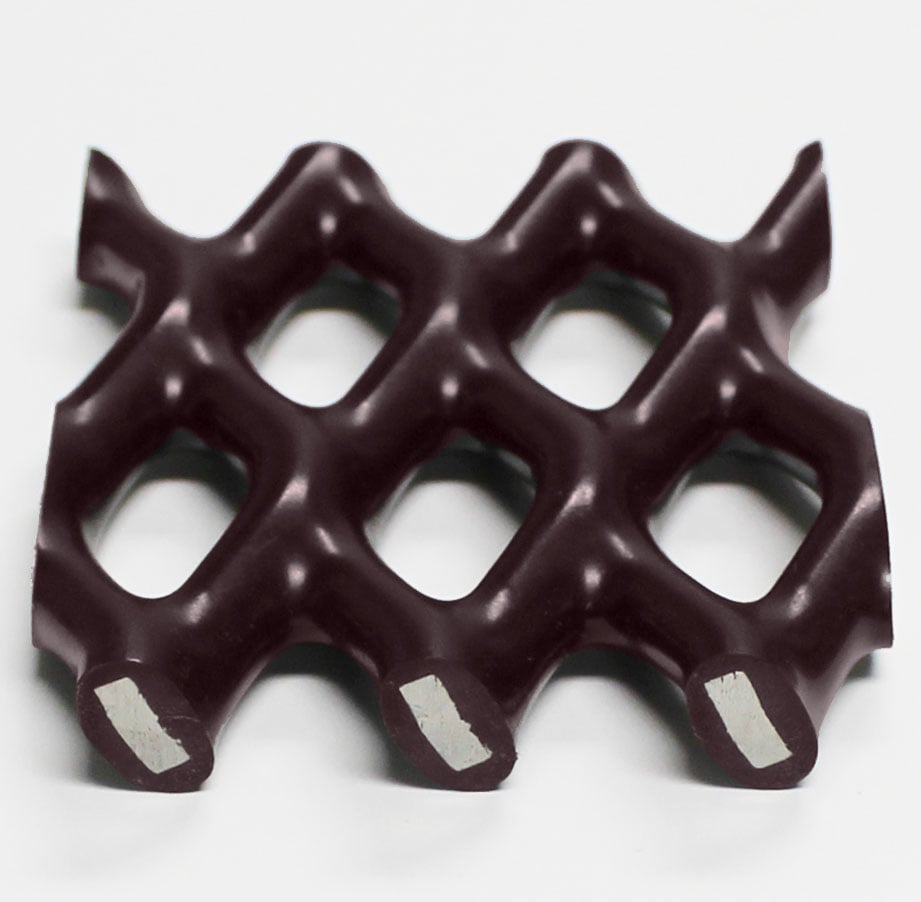Poly-Vinyl Coated Steel Raised Cage Flooring vs. No Raised Cage Flooring
When an animal is being housed in a veterinary clinic, one of the most essential elements for their housing environment is comfort. Since they are already in an unfamiliar environment, it is vital that these animals are comfortable mentally and physically, and this starts from the ground up with proper flooring.
One of the most significant debates in the material and structure of cage flooring is between poly-vinyl coated steel raised or no additional flooring. Ultimately, raised cage flooring is much more convenient for cleaning and maintenance and the poly-vinyl coated steel floor provides additional comfort that a bare stainless steel cage floor cannot.
Read on to learn more about the differences between poly-vinyl coated steel raised cage flooring and no raised cage flooring. We will also include the full benefits of using raised flooring, particularly those manufactured by RACS Animal Care Systems.
Comfort of Raised Coated Floors Versus Bare Cage Floors
As we said, when an animal is in the care of strangers and without the comfort of a bonded owner, they are likely to be depressed, stressed, or anxious. Especially so when following any type of procedure. Some might become agitated to the point that they become destructive towards their environment or themselves.
To prevent and reduce animal stress, a high priority for any veterinary clinic or caregiver is to provide these animals with the most comfortable environment possible, especially if they aren’t used to cages.
Temperature Control
One of the easiest ways to do this is to ensure the cage floor is built with the proper materials and furnishings so that the animal can be contained at a comfortable temperature and there is minimal risk of injury.
The raised flooring created by RACS is created with animal comfort in mind, as demonstrated by its steel structure being coated in a poly-vinyl material. This coating ensures that the cage floor’s temperature consistently maintains the temperature of whatever room it is in. Since the average room temperature is somewhere between 68 and 72 °F, the cage floor should be plenty warm for any pet’s comfort.
Conversely, bare cage floors and uncoated grates are typically made of a durable metal that won’t retain heat like the RACS coated flooring. As a result, these floors are noticeably colder, which is less comfortable for the cage’s inhabitants. This is especially true and dangerous if the animal held in this cage has a difficult time maintaining its own body temperature.
If they are placed in a bare cage, they will continuously struggle to keep their body at a comfortable temperature as the cold metal floor continuously sucks the heat out of them. This can be extremely dangerous to an animal already at-risk health-wise.
Floor Material
Another element of comfort is the floor’s material makeup. Although it is not ideal, some animals might need to be contained in cages for extended periods of time, especially in veterinary clinics when containment is necessary for a healthy and speedy recovery. However, this means the animals are sitting or laying on the same surface for extended periods of time, which can be extremely uncomfortable.
RACS flooring not only uses a poly-vinyl coating over their steel floors to assist with temperature control but physical comfort as well. The coating is smooth covers the surface with a 1/8-inch coating. This masterful design ensures maximum functionality because the materials allow for a sturdy and durable surface, but the thick and smooth coating provides a cushion for the cage’s inhabitants.
In addition to the comfortable materials, RAC floors also prevent animal injury by designing the holes in their raised floors to be small enough that even small animals can’t get their paws caught.
Bare cage floors are rarely built with these cushioning and protective coatings, and so, it is much easier for an animal to injure or bruise themselves on these hard, metallic surfaces while in the cage. This is especially applicable to anxious animals that aren’t used to cages and lash out from discomfort or stress.
One common cause for bruising in bare cage inhabitants is slipping. Since these floors are made from a cool, sleek material, they can be extremely slippery for animals, and if they are already in a heightened state, they could easily slip and fall over, effectively injuring themselves.
Cleaning Raised Floors Versus Non-Raised Floors
When a cage is in a veterinary clinic, shelter, or other animal environments where inhabitants come and go, it is essential that these housing environments are clean and sanitary. Sometimes, this needs to be done multiple times a day, or if it is a cage that one animal uses regularly, it can be done a few times a week. Regardless, cleaning a cage, particularly of significant size, can be a huge ordeal if the cage is not designed for convenience.
Raised cage floors designed by RACS are the epitome of efficient and convenient design for cage cleaning. To start, because the floors are raised, any debris, fluids/feces, hair, and so on will slip through the mesh holes in the floor to the bottom of the cage.
This is extremely convenient for two reasons:
-
You can line the bottom of the cage with paper towels or newspapers to catch contaminants for easy cleaning.
-
This design keeps all of these contaminants off of the caged animal, which mitigates the necessity to clean them constantly, as is often the case with non-raised floors.
In addition to these raised floors allowing for easy cleaning, the holes in the floor allow for air circulation that can help reduce odors as well as drying the cages quicker after they are sprayed down, or a recently bathed animal is placed inside. You can even use commercial disinfectants and power washers on these floors.
Despite being made of durable steel, these are lightweight floors. So any caregiver can conveniently remove and clean the floors.
When it comes to bare, flat cage floors, the animals are directly on the cage floor. This means that they can get dirty just as easily as the floor, and so, both need to be cleaned regularly. Unfortunately, most of these cages are too large or made of heavy materials that can’t be easily moved. Therefore, more than one caregiver might have to assist in the cleaning process and more time would be spent cleaning.
Another factor to consider is that since these cages typically have harsh and cold floors, they are often covered with some form of bedding.
Bedding is fantastic for an animal’s comfort. However, it isn’t particularly convenient for cleaning since they too tend to get dirty. Therefore, when cleaning the cage, you will likely need to clean the bedding as well. Bedding is certainly an option with RACS’ raised floor cages, but since they have other design elements that ensure an animal’s comfort, they aren’t necessary.
Additional Benefits of Poly-Vinyl Coated Steel Raised Cage Flooring
By now, it is clear that if the choice is between the coated raised floor cages versus bare cages. The coated raised floors reign supreme, both in comfort and convenience. However, the benefits of these floors don’t stop here.
Listed below are some additional facts and benefits regarding RACS’s poly-vinyl coated animal floors, so you know any animal housed in a cage with these floors receives the best housing it can.
Built for Longevity
While it is exceptional that these floors are comfortable for pets and convenient for caregivers, it wouldn’t help if they needed constant replacement. Luckily, cage floors built by RACS are built to last.
Each cage floor is made of durable steel. Each floor is professionally welded before being completely coated in liquid plastisol. This process ensures longevity. The plastisol coating ensures there is no exposed steel that could potentially rust.
Many have lasted customers 20+ years due to their exceptional design and protective measures.
No Assembly Necessary
Hesitant to invest in one of these cage floors because you are concerned they require an in-depth and lengthy assembly process? You can rest at ease. Each RACS cage floor is shipped fully assembled and ready to use. This is done for maximum convenience to consumers. It also ensures the product is assembled properly beyond doubt before it is inserted into any cage.
Can Fit Any Cage
Animals come in all shapes and sizes, and so cages must also be built in varying sizes to accommodate them. RACS is aware of this fact. As a result, they offer cage floors in various standard sizes that will fit into most manufactured cages. Have a cage that doesn’t match any of these standard sizes? RACS’s exceptional team is more than happy to work with you on a customized cage floor that suits your needs.
Final Thoughts
The best product you can buy to ensure any animal’s comfort is RACS’s poly-vinyl coated steel raised cage floors. These floors are safe for animals, do not sacrifice convenience, easy to clean, require no assembly, and can fit any cage.
You can purchase any of these cage floors online. Prices range from $112 to $394, depending on your chosen product’s size and style. If you need a customized floor, request a quote and we’ll get back to you. We guarantee to provide a personalized service and help find you the best product to suit your needs.










